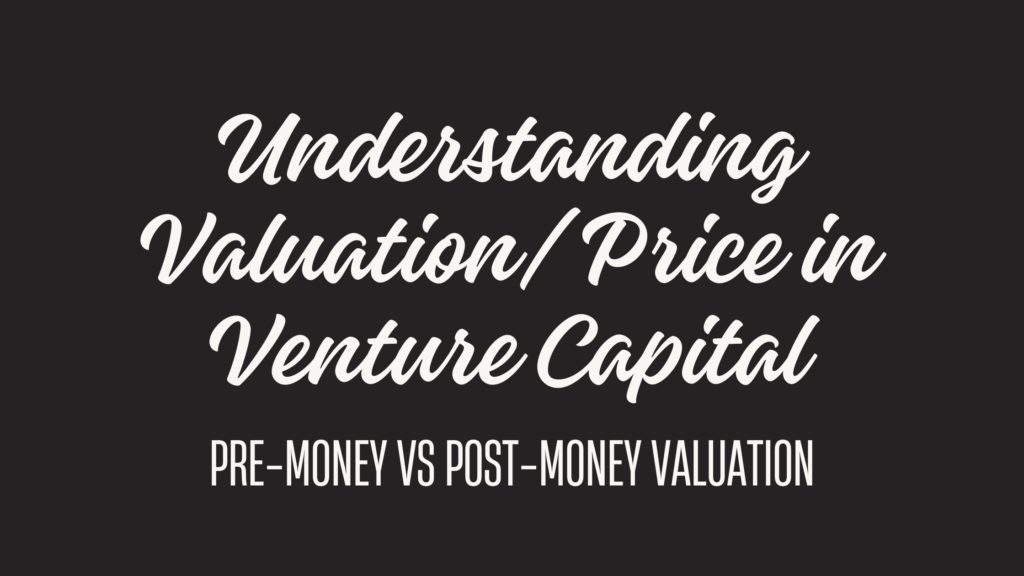A seemingly intuitive and simple concept but is often a subject of confusion and error. Here’s an attempt to simplify the understanding-
- Two common jargons are used to describe valuation in venture capital- Pre-Money and Post-money valuation.
- To buy anything, you need to know the price to pay.
- Pre-money valuation is the price that an investor places on your company before he puts his money.
- Post-money valuation is the price of the company after the investor invests the money into the company i.e. Post-money Valuation= Pre-money Valuation+ the invested amount.
- Simply put, Valuation/price of the company= Price per share X Total Number of Shares. When the investor invests money he gets shares issued in return and that signifies the ownership in a company.
Explanation
Assume Tom and Harry decide to start a company to sell chocolates. They decide to contribute 5 chocolates each. Therefore, the share of ownership in the company between Tom and Harry is 5/10= 50% each.
Now, Ryan decides to buy ownership in the above company and hence he has to know the price to pay to buy a portion of the ownership. This requires valuing the company. So Ryan intends to keep things simple and arrives at a number via the following calculation-
Tom + Harry= 5 chocolates +5 chocolates= 10 chocolates = 100% of the company.
Therefore, 1 chocolate buys 10% of the company. Hence Ryan communicates to Tom and Harry that their company is worth the price of 10 chocolates or 10 chocolates (to keep it simple). Hence, 10 chocolates is the Pre-Money valuation of the company i.e. before Ryan invests.
Ryan decides to contribute 5 chocolates to the company. The Post-money valuation i.e. Pre-Money valuation + Committed investment amount viz. 10 chocolates (pre-money valuation) + 5 chocolates (Ryan’s contribution) = 15 Chocolates. Hence, the Post-Money Valuation of the company= 15 Chocolates.
Ryan’s ownership in the company is 5/15 i.e. 33.3 % and consequently Tom and Harry’s ownership is diluted 33.33% each (5/15) from 50% by virtue of new investment received. Therefore, pre-money and post-money valuations are important to determine the portion of ownership to be given to an incoming investor.
Simple right! So where does the confusion arise?
Assume an investor says he will invest $25 Million at $100 Million valuation. What do you think he is referring to- is $100 Million a pre-money or post-money valuation? Do you think the founder is on the same page as the investor? Let’s find out.
If the investor gives you the offer of $25 Million at a $100 Million valuation, he MAY be talking about a POST-MONEY valuation i.e. $75 Million (pre-money valuation) plus $25 Million (investment), hence he gets an ownership share of $25 Million / $100 Million which is 25% of the company.
However, the Founder may not think the same. He may assume the $100 Million to be a PRE-MONEY Valuation. Hence, the POST- MONEY valuation in his view is $100 Million (pre-valuation) plus $25 Million (Investment) i.e. $125 Million Post-money valuation. Therefore, in that case the investor’s ownership share is $25Million /$125 Million i.e. 20 % of the company.
As seen above, it is important to be very clear about the pre-money and post-money valuation figures as it can lead to error and confusion. Hence, the founders (and investors) must make effort to spell out the pre-money and post-money valuation figures to avoid any costly errors in the future.
If you like to connect, you can reach me at [email protected]
